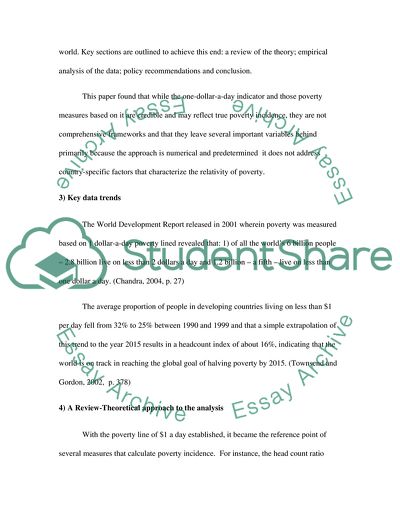Cite this document
(Poverty Line Measurement Analysis Case Study Example | Topics and Well Written Essays - 2000 words, n.d.)
Poverty Line Measurement Analysis Case Study Example | Topics and Well Written Essays - 2000 words. https://studentshare.org/macro-microeconomics/1730214-economics-of-development-are-poverty-measures-based-on-the-a-dollar-a-day-poverty-line-a-reasonable-concept-for-thinking-about-poverty-across-the-world
Poverty Line Measurement Analysis Case Study Example | Topics and Well Written Essays - 2000 words. https://studentshare.org/macro-microeconomics/1730214-economics-of-development-are-poverty-measures-based-on-the-a-dollar-a-day-poverty-line-a-reasonable-concept-for-thinking-about-poverty-across-the-world
(Poverty Line Measurement Analysis Case Study Example | Topics and Well Written Essays - 2000 Words)
Poverty Line Measurement Analysis Case Study Example | Topics and Well Written Essays - 2000 Words. https://studentshare.org/macro-microeconomics/1730214-economics-of-development-are-poverty-measures-based-on-the-a-dollar-a-day-poverty-line-a-reasonable-concept-for-thinking-about-poverty-across-the-world.
Poverty Line Measurement Analysis Case Study Example | Topics and Well Written Essays - 2000 Words. https://studentshare.org/macro-microeconomics/1730214-economics-of-development-are-poverty-measures-based-on-the-a-dollar-a-day-poverty-line-a-reasonable-concept-for-thinking-about-poverty-across-the-world.
“Poverty Line Measurement Analysis Case Study Example | Topics and Well Written Essays - 2000 Words”. https://studentshare.org/macro-microeconomics/1730214-economics-of-development-are-poverty-measures-based-on-the-a-dollar-a-day-poverty-line-a-reasonable-concept-for-thinking-about-poverty-across-the-world.


